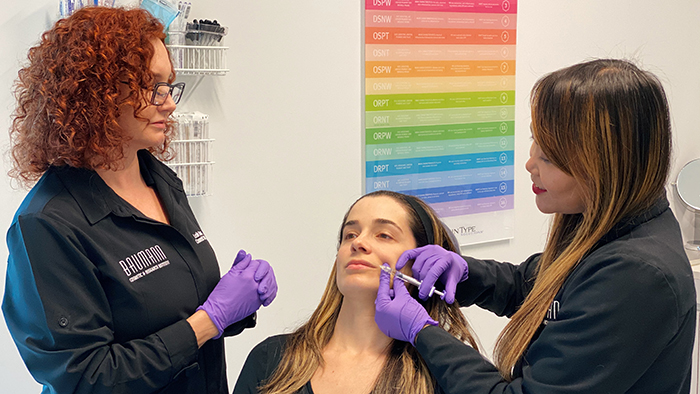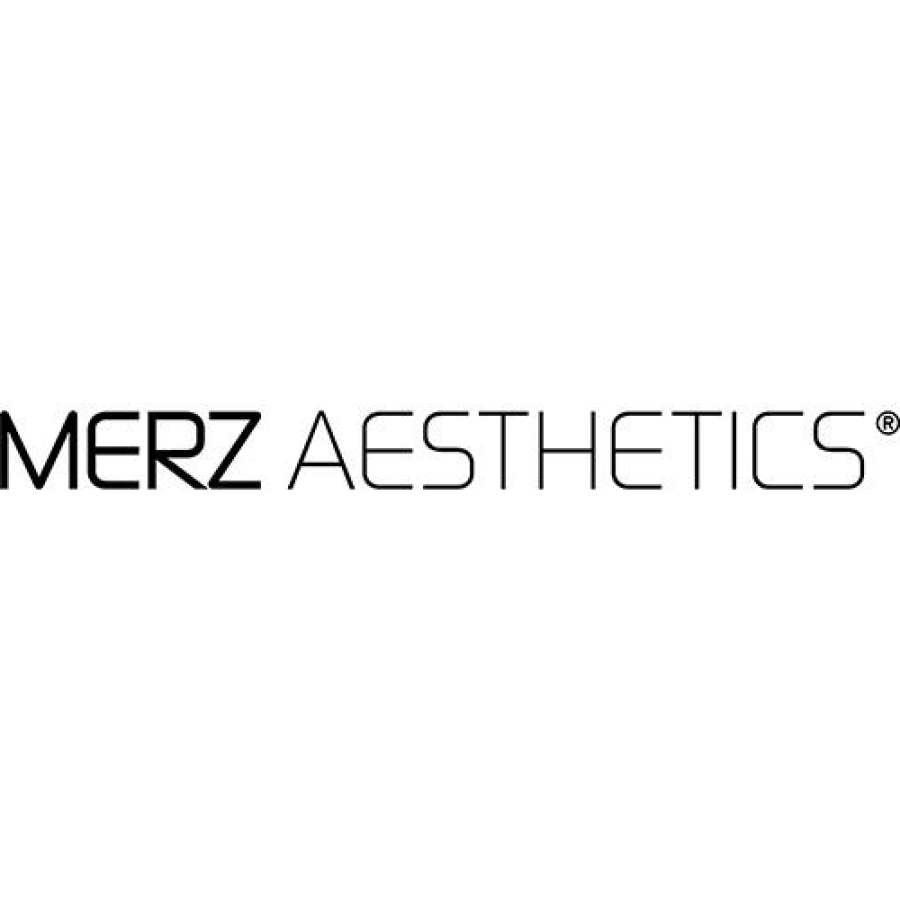
Clinical
Radiofrequency and Non-RF Microneedling Safety: What Patients Should Know
With Molly Muecke, RN, MSN, NP-CMicroneedling is a popular aesthetic treatment offered in 79% of med spas (2024 Medical Spa ...
Posted By Mike Meyer, Monday, July 6, 2020

By Leslie Baumann, MD, and Paula Purpera, PA-C
Dermal filler injections using hyaluronic acid (HA) are among the most common noninvasive cosmetic procedures performed today. There are many different varieties of HA filler on the market, so it is important to understand the differences in the various fillers so that you can choose the best option for patients. HA fillers usually are safe, but can cause serious complications, especially when not used properly; most complications are reversible when recognized and treated early.
HA is a naturally occurring sugar that binds 1,000 times its volume in water. It gives volume to the skin and helps with cell-to-cell communication. In its unmodified (uncrosslinked) form, natural HA has a half-life of approximately 24 hours before it is enzymatically broken down by hyaluronidase and metabolized in the liver.
This article will briefly discuss the features that differentiate the various HA fillers on the U.S. market.
Fillers with high concentrations of HA have more volume, viscosity and stiffness/firmness, as well as longer duration compared with the exact same HA with a lower concentration. Theoretically, the higher the concentration of HA in the filler, the stiffer it is and the longer it will last. Fillers are labelled as having a certain amount of mg/mL of HA in them; this number includes crosslinked and uncrosslinked HA. Only crosslinked HA contributes to duration of the filler, because uncrosslinked HA degrades in approximately 24 hours. Uncrosslinked HA often is added to dermal fillers to make extrusion from the syringe easier and smoother. Although the concentration of HA in a dermal filler is important, other factors also come into play when considering longevity, including the amount of crosslinking, viscosity/spreadability, stiffness and cohesivity.
HA is quickly degraded by the naturally occurring enzyme hyaluronidase. In order to increase longevity, HA is chemically modified and "crosslinked" to form a hydrogel. A higher percentage of crosslinks leads to a firmer product, increased longevity and decreased flexibility.
Chemical crosslinks bind the strands of HA together, but not all crosslinks are complete. As seen in the figure, complete crosslinks bind at least two different HA chains, while incomplete crosslinks—also called pendant crosslinks because they look like a pendant on a necklace—are only attached to one chain. Pendant crosslinks provide less stability and duration than complete crosslinks. There is no way for the practitioner to know how many of the crosslinks are complete versus incomplete; therefore, when a package insert says a product is 11% crosslinked, that information can be misleading.
The stiffness, or G' (G prime) of a product is a measurement of gel hardness. It defines the gel's total resistance to deformation, or the amount of stress required to produce a given amount of deformation. It is measured by placing the gel on a plate and then placing a second plate over it and applying lateral force. The higher the G' of a product is, the firmer it is. The elastic modulus, as well as other factors, such as cohesivity of the product, determine the appropriate product placement of the HA filler. For example, gels with higher G', such as Restylane Lyft, are stiffer and are able to resist dynamic facial movements. These products may provide better lift and should be used in deeper lines, such as the nasolabial folds, melomental folds, and for lifting the lateral brows, or correcting the nasal bridge and tip. Low G' products, such as Juvederm Volbella, typically are used in areas that require a softer product, such as the lips, the tear trough, or fine lines and superficial wrinkles.
Complex viscosity (ŋ) is defined as resistance to flow. Crosslinked HA is more viscous than native HA, and a product with higher complex viscosity does not spread easily. A product with lower viscosity has a greater ability to flow and spread in the tissue. Ideally, a spreadable product is required in large areas that need to feel soft, such as the cheeks.
Cohesivity relates to the force between the particles of the material that enables it to stick to itself. This defines the property of the gel to spread (low cohesivity) or remain intact in the tissue (high cohesivity) as it is injected. Along with viscosity, this allows for the HA filler to be easily moldable after injection without fragmentation of the gel.
Extrusion force is important, because the force with which the HA leaves the syringe can affect bruising and the risk of tissue damage and vascular occlusion. Syringe design, the addition of uncrosslinked HA to the filler, the needle gauge used and the amount of pressure placed on the plunger by the aesthetic provider all affect extrusion force.
Bruising and swelling are common complications of HA dermal filler injections. Having the patient avoid NSAIDS, aspirin, salmon, green tea, vitamin E and other anticoagulants for 10 days prior to injection can decrease the risk of bruising. Using the proper pre- and post-procedure skin care also can decrease bruising and swelling. Using a lighter extrusion force, avoiding vessels, using a careful massage technique, and warning patients to avoid heat, stress and exercise for 48 hours after the procedure can help minimize complications.
The following are serious complications that can result from filler injections. You must know how to handle each of these before injecting patients:
Vascular occlusion. Vascular compromise is the most serious complication associated with dermal filler injections. Arterial occlusion can result from direct embolization of filler material into an artery that presents immediately as skin blanching and pain. If left untreated, this can lead to deep tissue loss due to necrosis or, worse, vision loss. Venous occlusion, on the other hand, may be caused by large volumes of filler injected into a small area. This can present as prolonged pain and swelling with a dark discoloration. Vascular compromise can be prevented by knowing facial anatomy and proper injection depth, as well as using a slower injection technique with minimal pressure; small boluses also are recommended. Treatment consists of hyaluronidase injections, warm compresses, massage and applying nitroglycerin paste to the affected area.
Delayed nodule formation. Delayed nodules appear as non-fluctuant lumps under the skin, usually in either the dermis or the subcutaneous space. These may present several weeks to months after injections, and may be caused by infection or an autoimmune response. These nodules are very troubling and can be disfiguring to patients.
Some nodules are caused by bacterial collections that secrete polymers, creating a biofilm over the injected material, and cause them to irreversibly adhere to the product. This biofilm not only creates an inflammatory nodule, but can also release bacteria in the surrounding tissues, causing an infection or another inflammatory nodule. This can be avoided by employing aseptic technique during injections, as well as a thorough review of patient medical history.
Some nodules are caused by activation of the immune system. We are not certain why this occurs. Therefore, never inject patients with a HA filler if they have received vaccinations in the previous two weeks. Many doctors believe this may increase the chance of a delayed type hypersensitivity reaction. Management of these nodules exceeds the scope of this article.
Angioedema. Some patients may develop an IgE-mediated hypersensitivity to the injected fillers. This is characterized by swelling, erythema, pain and itching that is seen in an allergic reaction. This usually presents within an hour of injection, but can persist for weeks. Angioedema typically resolves with antihistamines, but recalcitrant cases may need to be treated with oral prednisone. Rapidly progressing angioedema must be closely monitored, as it can lead to an airway obstruction.
To learn more about injectables safety information with insights from Alexa Nicholls Costa, NP, and Alexandra Rogers, NP, of LexRx, visit Injectables Safety: What Patients Should Know About Dermal Filler and Neurotoxin.
Many injectors follow mathematical guidelines and use the same injection techniques for every patient. Adhering to the Golden Rule or the Divine Proportion of 1:1.618 during cosmetic injections imparts harmony and beauty to the aging face, but it is imperative that patient consultation and treatment be as customized as possible. Knowledge of facial anatomy is crucial for safety purposes and improved aesthetic outcomes, but patient assessment in an artistic manner is paramount for increased patient satisfaction. Gender differences in anatomy and ideal face shape must be considered, as must concordance with the rest of the facial features.
Managing patient expectations with realistic endpoints is key to patient satisfaction. Having a written pre- and post-procedure skin care regimen augments the effectiveness of dermal filler injections and ensures patient compliance. Monitoring progress and outcomes using standardized photos is key.
Today's aesthetic patient wants to achieve a subtle, more natural look with filler injections. Visit our resource page for data on filler fears and misconceptions, patient education strategies and other resources to help you provide satisfying, natural results with HA filler: Achieving Natural Looking Results with HA Filler Treatments.
With the rapid increase in popularity of filler injections, extensive understanding of dermal fillers is fundamental for any aesthetic injector. For optimal results, aesthetic providers and injectors need to have a thorough understanding of facial anatomy, have in-depth knowledge of dermal filler rheology, and be able to avoid, recognize and manage potential complications.
For legal updates and business best practices delivered straight to your inbox, subscribe to AmSpa's email newsletter. For more information on how AmSpa can help your practice operate legally and profitably, contact us online or call us at 312-981-0993.
Leslie Baumann, MD, FAAD, is board-certified dermatologist, researcher and author. She was director of the Division of Cosmetic Dermatology at the University of Miami from 1997-2006. Her clinical trial research has been instrumental in the U.S. Food and Drug Administration (FDA) approval of Botox, Dysport, Jeauveau, Kybella, Voluma, Sculptra, Juvéderm, Restylane Silk, UltraShape Power, Ulthera and other aesthetic treatments. Baumann authors a twice-monthly column for the Miami Herald newspaper and a monthly column on cosmeceutical ingredients in Dermatology News. She holds four patents on methods to improve the skin's health and appearance.
Paula Purpera, MSHS, PA-C, is a cosmetic dermatology PA based in Miami, Florida. She specializes in anti-aging and acne skincare, as well as laser use in dermatology. She is an expert in platelet-rich plasma injections and microneedling for skin rejuvenation, hair restoration and improvement of scars and stretch marks. Purpera is an Allergan Master Injector and serves as a trainer and lecturer regarding cosmetic injection techniques and other cosmetic procedures. She is a published author and has three pending textbook chapters on cosmetic dermatology.
Related Tags
Medical spa news, blogs and updates sent directly to your inbox.

Clinical
With Molly Muecke, RN, MSN, NP-CMicroneedling is a popular aesthetic treatment offered in 79% of med spas (2024 Medical Spa ...

Clinical
On November 5, 2025, Merz Aesthetics announced that Ultherapy PRIME® gained U.S. Food and Drug Administration (FDA) clearance to improve ...

Clinical
By Belmar Pharma SolutionsWhen it comes to menopause, a once-taboo topic, the tide has finally changed. Women now have access ...

Clinical
The FDA’s recent safety communication regarding radiofrequency (RF) microneedling devices is a critical reminder: Aesthetic treatments involving energy-based devices are ...